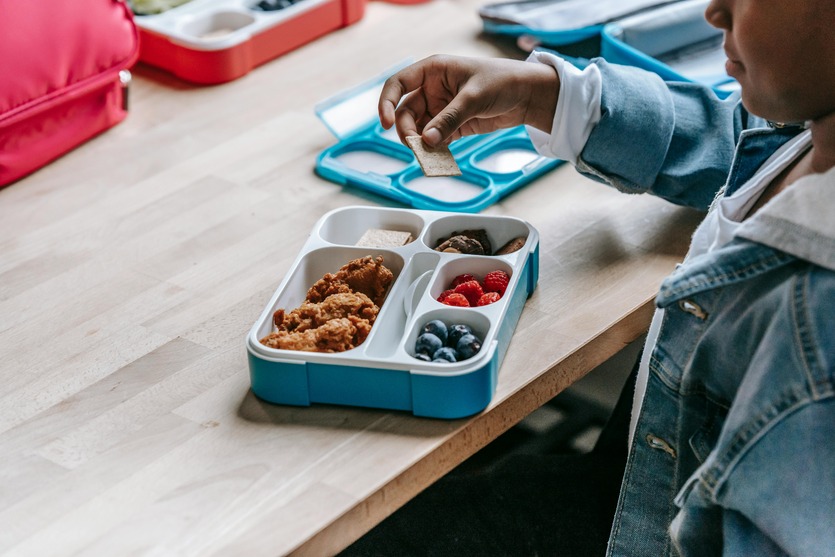Hey parents! Let’s dive into a topic that’s crucial for your child’s well-being—Lunch Box Politics: A Guide to What You Should and Shouldn’t Do. This guide will help you navigate the choices you make when preparing your child’s lunch and ensure that lunchtime is both enjoyable and nutritious.
What is Lunch Box Politics?
You might be wondering, “What is Lunch Box Politics?” Simply put, it’s about the decisions you make when packing your child’s lunch and how these choices affect their nutrition, social interactions, and overall satisfaction. Understanding Lunch Box Politics: A Guide to What You Should and Shouldn’t Do will help you create a lunch box that supports your child’s health and happiness.
What You Should Do
1. Pack Nutritious and Balanced Meals
When packing your child’s lunch, focus on including a variety of fruits, vegetables, proteins, and whole grains. A well-balanced meal is essential for keeping your child energized and healthy. Remember, Lunch Box Politics: A Guide to What You Should and Shouldn’t Do emphasizes the importance of a nutritious lunch.
2. Involve Your Child in the Planning
Let your child have a say in what goes into their lunch box. This can increase their excitement about eating and teach them about healthy food choices. By engaging them in the process, you’re also making Lunch Box Politics: A Guide to What You Should and Shouldn’t Do a fun and educational experience.
3. Use Fun and Appealing Packaging
Make lunchtime enjoyable by using colorful and creative packaging. Bright containers and fun shapes can make meals more appealing to your child. This small touch can significantly enhance the effectiveness of Lunch Box Politics: A Guide to What You Should and Shouldn’t Do.
4. Stick to the School’s Policies and Guidelines
Adhere to your child’s school policies regarding lunch boxes to avoid any issues. Following these guidelines ensures that your child’s lunch is compliant with school rules and aligns with the principles of Lunch Box Politics: A Guide to What You Should and Shouldn’t Do.
What You Shouldn’t Do
1. Avoid Over-Packing or Packing Unhealthy Snacks
Resist the urge to over-pack or include too many sugary snacks. Focus on packing a balanced meal without excess. This aligns with the core advice of Lunch Box Politics: A Guide to What You Should and Shouldn’t Do.
2. Don’t Force Unwanted Foods
Don’t pack foods that your child doesn’t like or won’t eat. Instead, focus on foods they enjoy while keeping them healthy. This approach helps prevent waste and ensures that your child’s lunch aligns with Lunch Box Politics: A Guide to What You Should and Shouldn’t Do.
3. Avoid Repeating the Same Meals Daily
Variety is key in keeping your child’s lunch interesting and nutritious. Avoid repeating the same meals every day to keep their lunch exciting and aligned with the tips in Lunch Box Politics: A Guide to What You Should and Shouldn’t Do.
4. Don’t Ignore Food Allergies or Sensitivities
Always be mindful of any food allergies or sensitivities your child might have. Ensure that all items in their lunch box are safe and suitable, adhering to the guidelines of Lunch Box Politics: A Guide to What You Should and Shouldn’t Do.
Conclusion:
And there you have it—your comprehensive guide to Lunch Box Politics: A Guide to What You Should and Shouldn’t Do! By following these tips, you can ensure that your child’s lunch is both nutritious and enjoyable. Keep in mind the importance of balanced meals, variety, and adherence to school policies, and you’ll navigate lunch box politics like a pro.
FAQs
1. What are some nutritious options for a child’s lunch box?
For a balanced lunch, include items like whole grain sandwiches, fresh fruits, vegetable sticks with hummus, and yogurt. Aim for a mix of proteins, veggies, and grains to keep your child energized and satisfied.
2. How can I make lunch boxes more appealing for my child?
Use colorful containers, try fun shapes for fruits and sandwiches, and occasionally include a small treat. Presentation can make a big difference in how excited your child is about their meal.
3. What should I avoid packing in my child’s lunch box?
Avoid packing too many sugary snacks, overly processed foods, or items that your child doesn’t enjoy. Also, make sure to skip anything that might cause allergies or discomfort.
4. How can I ensure my child eats a balanced meal?
Involve your child in meal planning, offer a variety of foods, and ensure each lunch box contains a mix of fruits, vegetables, proteins, and whole grains. Variety and choice can make balanced meals more appealing.
5. What if my child is a picky eater?
If your child is picky, involve them in choosing their lunch items from healthy options, and try to introduce new foods gradually. Make sure the lunch box contains a mix of foods they like and are willing to try.




